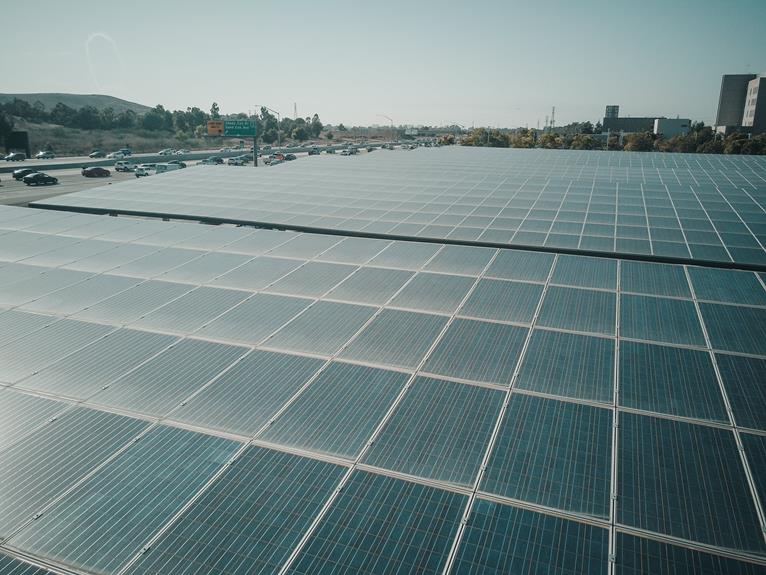Welcome to our informative guide on the various types of solar cells, designed to enhance your knowledge of solar energy. In this article, we will explore different solar cell varieties, efficiency benchmarks, and comparative costs to help you make informed decisions for your sustainable energy needs.
Introduction
You’ve probably heard of solar power as a clean energy alternative, but you might not be aware of the different types of solar cells that capture the sun’s energy and convert it into electricity.
From the widely used crystalline silicon cells to the thin-film solar cells and the cutting-edge perovskite and organic photovoltaic cells, each type offers a unique blend of efficiency, cost, and application suitability.
As a professional, you need to understand the nuances that distinguish these types, as they can significantly impact the performance and feasibility of solar installations.
Let’s explore what sets these solar cells apart and how they can be integrated into energy solutions, leaving you with a clearer understanding of which solar technology might best suit your needs.
Listen To The Summary
Solar Cell Varieties
There’s a diverse array of solar cell types, each with unique characteristics and applications that you might find surprisingly versatile. The heart of these cells lies in the solar cell materials and the manufacturing processes used to create them.
You’ve got your classic silicon-based cells, which are the most common and cost-effective option for residential and commercial use. They’re reliable and provide a decent efficiency in converting sunlight into electricity.
Then there’s the more advanced thin-film solar cells. These are made from a variety of materials, including cadmium telluride or copper indium gallium selenide. They’re lightweight, flexible, and can be applied to different surfaces, making them ideal for integrating into buildings or even vehicles. However, they often have lower efficiencies compared to silicon cells.
For those who are truly dedicated to serving others and our planet, exploring cutting-edge options like organic photovoltaic cells can be rewarding. These are made from carbon-based materials and offer the potential for lower production costs and less environmental impact during manufacturing.
Solar Cell Varieties
Crystalline Silicon Cells
- Most common and cost-effective for residential and commercial use.
- Reliable with decent efficiency (often above 20%).
Thin-Film Solar Cells
- Made from various materials like cadmium telluride or copper indium gallium selenide.
- Lightweight, flexible, and suitable for diverse surfaces, but often with lower efficiencies (around 10-13%).
Organic Photovoltaic Cells
- Made from carbon-based materials, offering potential cost savings and reduced environmental impact.
- Rewarding for those dedicated to sustainability, but still advancing in efficiency.

Efficiency Benchmarks
While exploring the various solar cell types, it’s crucial to consider how efficiently they convert sunlight into electricity, a key metric that significantly influences their overall performance and suitability for different applications. As you’re aiming to serve others through sustainable energy solutions, you’ll want to understand which solar cells will offer the best energy return for their investment.
Here are some efficiency benchmarks to keep in mind:
- Monocrystalline Silicon Cells: Often reaching efficiencies above 20%, these cells are among the top performers due to their high-grade silicon.
- Polycrystalline Silicon Cells: Slightly less efficient, with average efficiencies around 15-17%, but offer a more affordable option.
- Thin-Film Solar Cells: These vary widely but typically have lower efficiencies, around 10-13%. However, material innovations are pushing these boundaries.
- Perovskite Solar Cells: A promising newcomer with efficiencies already surpassing 25% in lab settings, thanks to rapid advancements.
Comparative Costs
In addition to efficiency, you’ll need to weigh the varying costs of solar cells, as they play a pivotal role in determining the most economical choice for your energy needs. Solar cell prices are influenced by market trends and can be offset by investment incentives, so it’s essential to stay informed.
Here’s a simplified breakdown to help you compare:
|
Solar Cell Type
|
Average Cost (per watt)
|
Long-Term Savings Potential
|
|---|---|---|
|
Monocrystalline
|
$1 – $1.50
|
High
|
|
Polycrystalline
|
$0.90 – $1
|
Moderate
|
|
Thin-Film
|
$0.70 – $1
|
Lower
|
|
PERC
|
$1 – $1.20
|
High
|
|
BIPV
|
> $1.50
|
Variable
|
Monocrystalline and PERC cells generally offer higher efficiency but come with a steeper upfront cost. However, their long-term savings potential is significant, making them a wise choice if you’re looking to serve your community sustainably. Polycrystalline and thin-film options present a lower initial investment but may not yield as much savings over time. BIPV, an aesthetic and integrative solution, varies widely in cost and savings potential. Ultimately, considering investment incentives and your commitment to serving others through sustainable energy choices will guide you to the best option.
Common Applications
Solar cells have revolutionized the way you can harness energy, finding their way into a myriad of applications ranging from residential rooftops to vast solar farms. They’re not just about saving the planet; they’re about empowering communities, promoting energy independence, and taking advantage of renewable incentives that make solar power more accessible.
Here’s how you’re making a difference by integrating solar cells:
- Residential Rooftops: You’re turning homes into power stations, reducing reliance on the grid and cutting energy bills.
- Commercial Buildings: By installing solar panels on businesses, you’re contributing to corporate sustainability and potentially reaping tax benefits.
- Remote Areas: You’re bringing electricity to off-grid locations, fostering development where traditional power infrastructure may be impractical.
- Transportation: Innovations like solar-powered cars and charging stations are pushing the envelope for clean mobility options.
With each solar panel installed, you’re not just capturing sunlight; you’re crafting a legacy of clean, self-sufficient energy production. You’re educating communities about the tangible benefits of renewable energy. You’re contributing to a culture that values sustainable living and encourages others to take actionable steps towards a brighter, greener future.
Installation and Maintenance
Having explored the diverse applications of solar cells, let’s now consider the practical side of ensuring they operate efficiently through proper installation and maintenance. You’re not just investing in a source of clean energy; you’re committing to a system that requires thoughtful care.

When it comes to setting up your solar panels, you’ve got a range of mounting options. Whether you’re positioning them on a roof or in a large field, the angle and orientation are crucial for maximum sunlight exposure. You’ll also want to think about the weather’s impact. Durable installations can withstand harsh conditions, but regular check-ups will help to address any wear and tear promptly.
To give you a clearer picture, here’s a handy table:
|
Factor
|
Consideration
|
|---|---|
|
Mounting Options
|
Roof, ground, pole, and tracking systems
|
|
Orientation
|
Geographic location dictates optimal tilt and direction
|
|
Weather Impact
|
Resilience to wind, rain, and snow
|
|
Maintenance Routine
|
Regular cleaning and electrical system checks
|
|
Professional Assistance
|
For installation and complex repairs
|
Frequently Asked Questions
How Do Solar Cells Impact the Environment Throughout Their Lifecycle, Including Production and Disposal?
You’ll find that solar cells’ environmental impact varies, but they pose recycling challenges and material toxicity risks during production and disposal, urging a need for responsible management to serve our planet better.
Can Solar Cells Be Integrated Into Building Materials, Such as Windows or Roofing Tiles, and What Are the Advancements in This Field?
You can find solar cells in building materials now, like windows with transparent photovoltaics. Advances in building integration propel this green innovation, serving communities with energy-saving solutions embedded right into homes and offices.
What Are the Safety Concerns Associated With Solar Cells, and What Measures Are Taken to Mitigate Any Risks?
You should know solar cells pose chemical hazards and require electrical safety measures. Manufacturers take steps like using non-toxic materials and ensuring proper wiring to protect you and those you serve.
How Do Weather Conditions and Geographic Location Affect the Performance and Longevity of Different Types of Solar Cells?
You’ll find climate resistance varies by cell type, affecting both performance and maintenance costs. Harsh weather and your location’s specifics play key roles in determining the best solar option for community-serving projects.
Are There Any Government Incentives or Subsidies Available for Adopting Solar Cell Technology for Residential or Commercial Use?
Yes, you’ll find various government incentives that can alleviate tax implications and soften installation challenges when you’re committed to adopting solar technology for your home or business to serve the community better.
Conclusion
Solar cells vary in types, each with unique benefits. Monocrystalline silicon ensures high efficiency and long-term savings, while polycrystalline and thin-film options offer lower upfront costs. Perovskite cells show promise with rapidly increasing efficiencies. Choose based on specific needs, budget, and sustainability commitment.
Solar cells are applied in residential rooftops, commercial buildings, remote areas, and transportation, promoting energy independence. Proper installation and maintenance, considering mounting options, orientation, weather impact, and regular check-ups, ensure efficient and durable solar systems.
While providing environmental benefits, responsible management of production and disposal minimizes adverse impacts. Integrating solar cells into building materials and advancements in this field are exciting for greener structures.
As solar technology advances, stay informed about safety concerns, weather conditions, location effects, and available government incentives. Stay well-informed to make sustainable decisions and contribute to a greener future.



